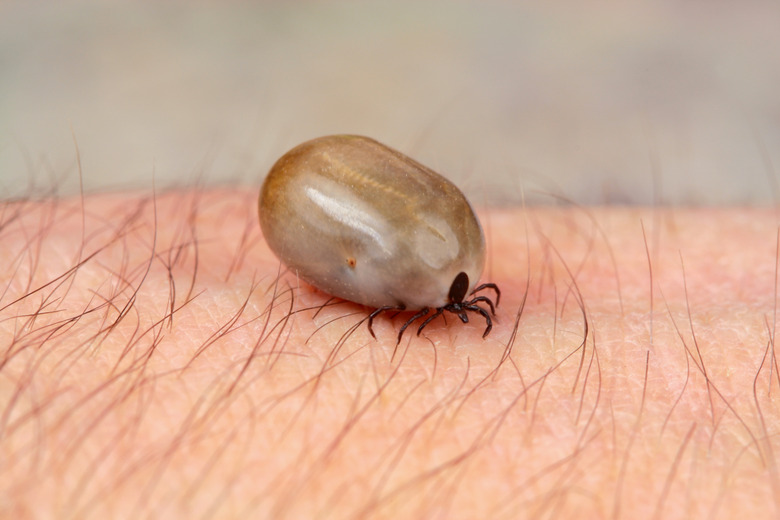What Is A White Tick?
A tick is a small spider-like creature that bites and attaches itself to the skin of an animal or human. Once attached, the tick will feed on the host's blood until that part of its life-cycle has ended or it is removed manually. The color of a tick depends upon the specific species and gender. There are no tick species that are actually white, but some have white markings or are generally light in color.
Lone Star Tick
Lone Star Tick
The lone star tick (amblyomma americium) can be found across eastern, south-eastern and Midwestern United States. The female has silvery-white spots on the back. These creatures feed on the blood of various animals including human beings and, in the process, can transfer pathogens such as tularemia.
Winter Tick
Winter Tick
Winter ticks (Dermacentor albipictus) are found across the majority of North America. The males have white spots on their backs. These ticks mainly feed upon moose but have been found on elk, deer and other hoofed animals. Winter ticks do not attach to humans.
Gulf Coast Tick
Gulf Coast Tick
The Gulf Coast tick (Amblyomma maculatum Koch) can be found in states close to the Gulf of Mexico. Male ticks are pale in color with reddish-brown spots. The adult Gulf Coast tick feeds upon upon a range of large animals including cattle and horses.
Cite This Article
MLA
Markings, Samuel. "What Is A White Tick?" sciencing.com, https://www.sciencing.com/white-tick-5390735/. 24 April 2017.
APA
Markings, Samuel. (2017, April 24). What Is A White Tick?. sciencing.com. Retrieved from https://www.sciencing.com/white-tick-5390735/
Chicago
Markings, Samuel. What Is A White Tick? last modified March 24, 2022. https://www.sciencing.com/white-tick-5390735/
